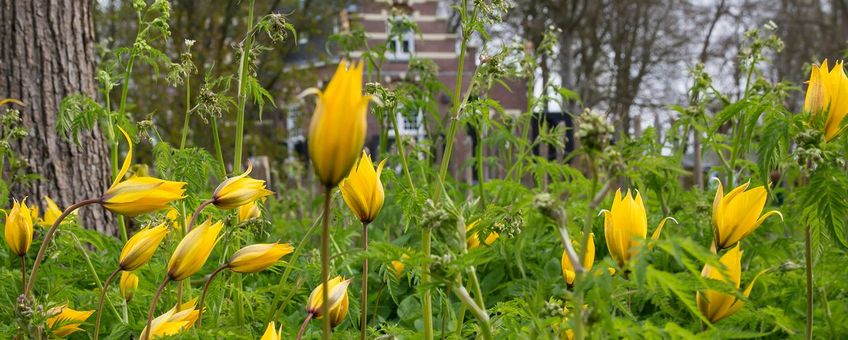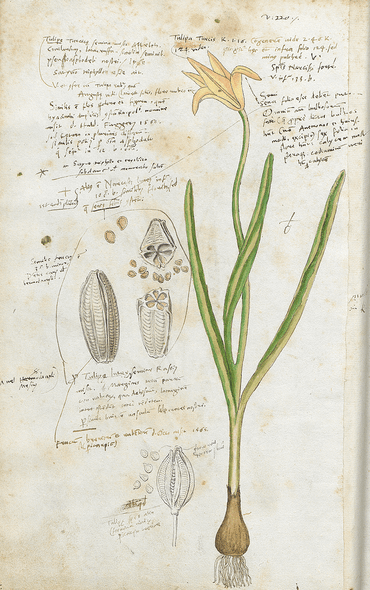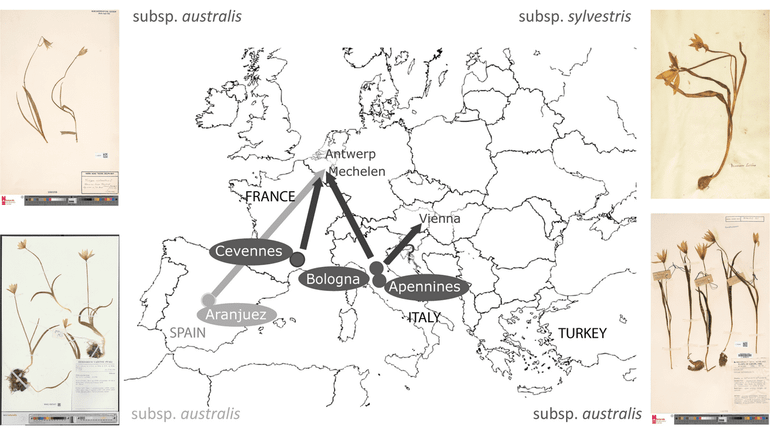
The wild tulip can refer generally to a tulip that grows wild, but it is also the vernacular name of Tulipa sylvestris. "We wanted to find out who brought the first Tulipa sylvestris to Northern European gardens, when this happened, and where the first wild tulips came from", Stefanaki explains. For this, she and Van Andel screened original sixteenth-century Latin botanical writings, personal mail correspondences, archives, dried plant collections and illustrations.
Status symbol
 The sixteenth century was a 'golden age' for botany. Plants were no longer seen only as sources of medicine, and an interest in ornamental plants emerged. Having rare and exotic plants in your garden was a sign of power. Often, plants were brought as curiosities and precious gifts to noblemen and royalties in the hope to seek new, or strengthen existent, links in the higher ranks.
The sixteenth century was a 'golden age' for botany. Plants were no longer seen only as sources of medicine, and an interest in ornamental plants emerged. Having rare and exotic plants in your garden was a sign of power. Often, plants were brought as curiosities and precious gifts to noblemen and royalties in the hope to seek new, or strengthen existent, links in the higher ranks.
In this context, the tulip was a flower of unprecedented beauty for sixteenth-century Europeans, and everybody wanted to have it in their garden. Once in Northern Europe, tulips started to circulate among botanists and their rich friends with gardens.
The wild tulip
"Unlike the tulips we have in our gardens today, which originate from bulbs that were brought from the Ottoman empire, the wild tulip came from the Mediterranean. The first Tulipa sylvestris bulbs that reached Northern Europe came from Bologna, Northern Italy, and Montpellier, Southern France", Stefanaki tells about their research findings.
There were various introductory events of the wild tulip in Northern Europe throughout the second half of the sixteenth century, and several famous botanists were involved. "From there, the tulip went wild. It started escaping the gardens, producing lateral offspring via its stolons. Not all plant species have this ability to spread by vegetative means."
"Considering the places of origin of these early bulbs, we realised that different subspecies of Tulipa sylvestris have been introduced to Northern Europe", Stefanaki points out, "and we should therefore reconsider the currently accepted taxonomy of this species." These findings highlight the importance of botanical history in understanding the complex taxonomy of naturalised cultivated plants that have a past of introduction.

Complete taxonomy
The next research of Anastasia Stefanaki and Tinde van Andel focuses on further investigating the taxonomy of Tulipa sylvestris. "We will do DNA- and morphology analyses of wild tulips collected from historical Dutch gardens and wild localities around Europe, including Italy and France where the first bulbs came from", Stefanaki says. "We aim to clarify the complex taxonomy of Tulipa sylvestris which has long been controversial and find out where in Europe this beautiful wild tulip is really native."
More information
- The preprint of the article entitled 'The Story of the Tulip That Went Wild: Tracing the History of Introduction of Tulipa Sylvestris in Sixteenth-Century Europe' has appeared in the scientific journal 'Scientific Reports'.
- For substantive questions, please contact Anastasia Stefanaki via anastasia.stefanaki@naturalis.nl.
Text: Joyce Andringa, Naturalis Biodiversity Center
Images: Martena State; Library, University of Tartu; Anastasia Stefanaki
